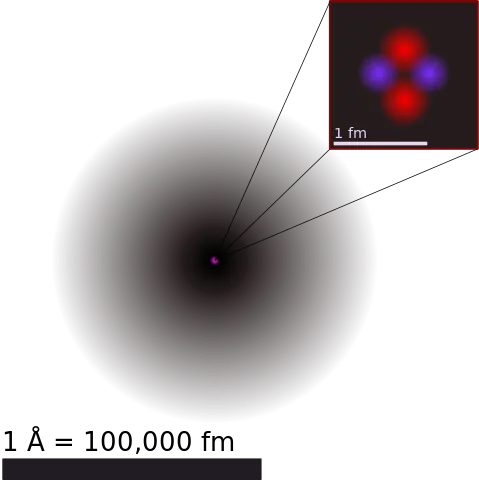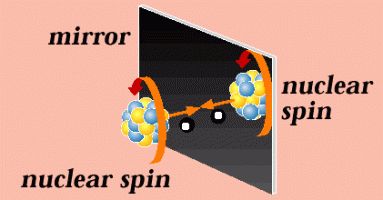Several experiments at CERN are successfully probing antimatter and its properties in order to (try to) falsify the validity of the so-called CPT symmetry, one of the most fundamental symmetries of nature. Showing that this symmetry does not hold would indeed have profound implications for our understanding of our universe.

[image credits: Pixabay (CC0)]
Last April, the ALPHA collaboration released brand new results about a test that physicists have been trying for the last 30 years.
It has shown, with an unprecedented level of precision, that the transition between the first two antihydrogen levels of energy is similar to the one occurring between the corresponding hydrogen levels.
Equivalently, hydrogen and antihydrogen are very alike, as could be expected from the CPT symmetry.
As can be guessed from this potentially complicated introduction, this post will be about antimatter, the CPT symmetry, energy levels and the fresh measurement carried by the ALPHA experiment.
WHAT ARE ANTIATOMS?
In the world of the elementary particles, each particle comes with an antiparticle partner that possesses many similar properties, like the same mass or the same lifetime. However, particles and antiparticles have opposite quantum numbers, the most well-known of these being the electric charge.
Let us take the example of the electron and the positron. They consist of a particle and an antiparticle whose only difference consists in their electric charge: the positron has a positive electric charge and the electron has a negative one.

[image credits: Wikipedia]
Whilst the elementary particles are the most basic building blocks of nature, they form composite objects known as protons and neutrons.
The latter are the basic constituents of the plethora of different atomic nuclei pervading our world.
And example is shown with the atom on the picture on the right, where two neutrons (blue) and two protons (red) form a helium nucleus.
Atoms are then formed from an atomic nucleus and a bunch of orbiting electrons (the grey zone on the picture).
Antiatoms work in the same ways, but one uses elementary particles to build antiprotons and antineutrons as a started. In practice, each ingredient of a proton or a neutron has been replaced by the corresponding anti-ingredient.
Antiprotons and antineutrons then form the composite objects known as antiatomic nuclei, and adding a bunch of orbiting positrons leads us to what is an antiatom.
THE ENERGY LEVELS
The exact configuration of the electrons around the atomic nucleus defines the so-called level of energy of the atom.
The fundamental level, or the ground state, consists in the configuration in which the electrons are closest to the nucleus. In this case, the total atom energy is minimum.
The excited levels of energy are then defined by configurations where one or more electrons are a bit further and with a larger energy.
For this reason, when one gets a transition from an excited level to the ground state, some energy is radiated away.
The further electrons are from the nucleus, the more excited is the configuration. What is important for the following are the first two levels, the fundamental one and the first excited one.
And of course, anything said holds for antiatoms as well, after having replaced every particle stuff by its antiparticle counterpart.
THE CPT SYMMETRY
There is not much difference between a particle and an antiparticle. But why are antiparticles and particles so similar? The reason is pretty straightforward when one starts from quantum field theory: a quantum field is a single object embedding both particles and antiparticles, as detailed here.
Therefore, after defining the properties of a given quantum field, one gets automatically similar particle and antiparticle properties.
Bonus comment: now, one can easily understand the reason why I sometimes receive requests from some scientific journals on agriculture…

[image credits: LBL]
Moreover, the way in which the particles eat, drink and dance is embedded in a function of these quantum fields.
One can demonstrate that this function is invariant under the joint action of the charge (C), parity (P) and time-reversal (T) transformations.
And as C+P+T = CPT. Here is where the name of the CPT symmetry comes from… Very imaginative!
The P transformation means that the spatial configuration of the particles is reversed (as when one looks through a mirror).
The C transformation implies the replacement of all particles by the corresponding antiparticles.
The T transformation changes the arrow of time, making time running backwards.
In other words, all of this means that the laws of nature are invariant under a joint C, P and T transformation. And the common goal of most matter-antimatter comparison experiments is to assess the validity of the fact that nature is CPT symmetric.
THE ALPHA EXPERIMENT FIGHTING THE CPT SYMMETRY
The ALPHA experiment focuses on the antihydrogen atom, that is the simplest possible antiatom.

[image credits: CERN]
Its nucleus is made of one antiproton, and there is a single surrounding positron. This is the antimatter counterpart of the hydrogen atom that is made of a single proton and one orbiting electron.
In order to try to falsify the CPT symmetry, physicists managed to measure, with an unprecedented precision, the energy released during the transition between the first two antihydrogen energy levels.
The results have been found to agree with the corresponding transition in the hydrogen atom at a precision of 2 x 10-12.
This has been achieved by first producing antihydrogen atoms from a beam of decelerated antiprotons that are combined with positrons. The antiatoms are then trapped in a magnetic field and finally bombarded with a laser.
The laser has been tuned at the right frequency, so that it could allow for the transition between the first two antihydrogen energy levels. The conclusions are then driven by comparing the antihydrogen reaction with the hydrogen one.
The CPT invariance of the laws for nature is thus still very alive!
TL; DR
In this post, I briefly described one of the most fundamental symmetries of nature: the CPT symmetry. One way to probe it is to study the properties of some matter particles and the corresponding antiparticles, these properties being expected to be strongly related.
For instance, the transition between the two most stable configurations of the hydrogen atom and the one between the two most stable configurations of the antihydrogen atom have to be identical.
This is what the ALPHA experiment revealed a month ago: at the 0.000000000002 level, these transitions match! The CPT symmetry is thus very valid and very alive! Pffeeewww, the Standard Model is saved ;)
For more information, please have a look to the official CERN press release.
A stupid stuff is hidden in this post… Can you find it? And it is not connected to agriculture (this is stupid as well, but too obvious) ;)
STEEMSTEM
SteemSTEM is a community-driven project that now runs on Steem for more than 1.5 year. We seek to build a community of science lovers and to make the Steem blockchain a better place for Science Technology Engineering and Mathematics (STEM).
More information can be found on the @steemstem blog, on our discord server and in our last project report. Please also have a look on this post for what concerns the building of our community.